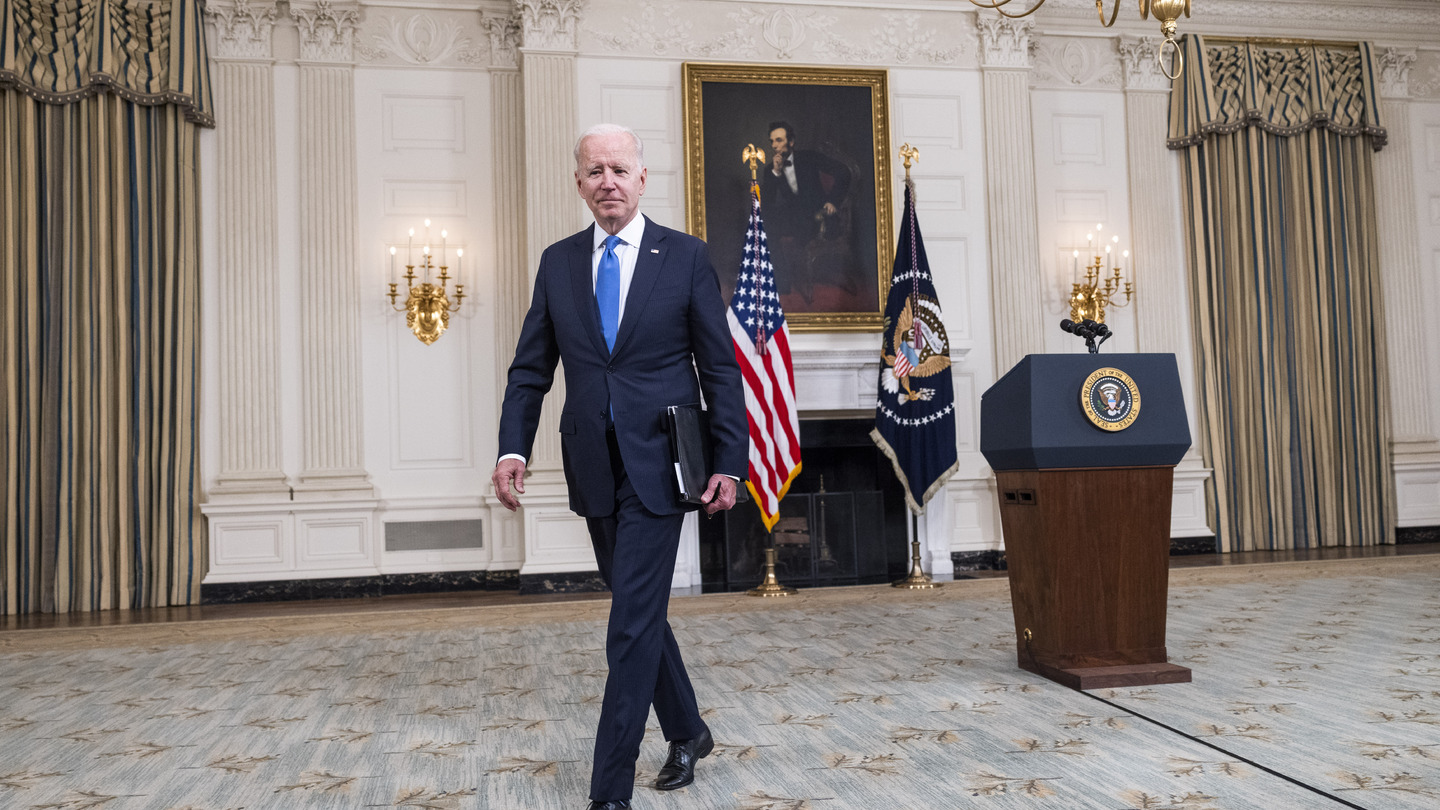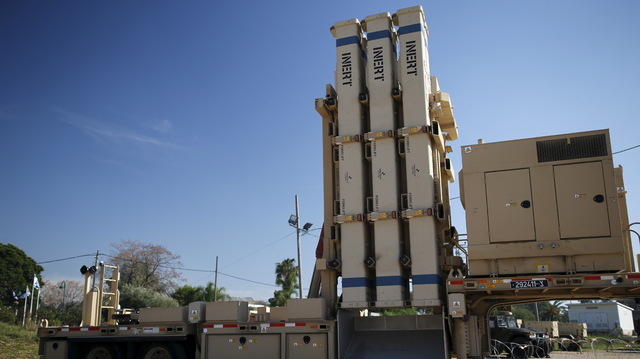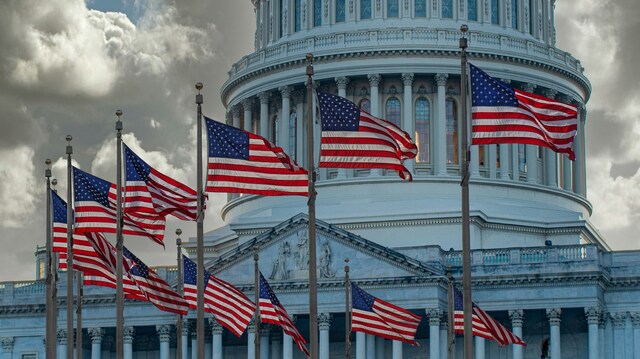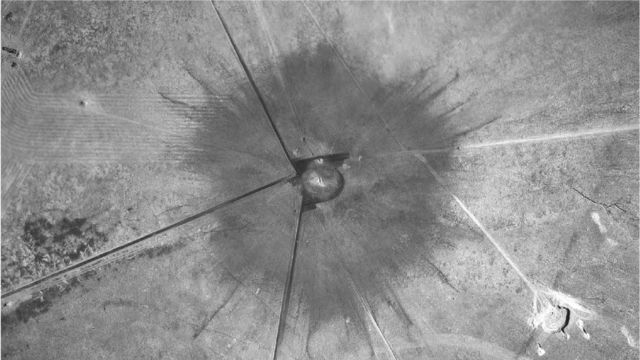Biden's Administration and its Security Policy as Regards Nucelar Weapons

The reflection deals with possibilities of finding at solution to the main nuclear arms control and nonproliferation issues in the wider international context from the point of view of President Joe Biden's Democratic administration's declared new approach as regards security policy. The closing part pays attention to some matters which could complicate and/or halt the implementation of the planned steps.
There is a certain hope that the new administration will assume a more cooperative stance as regards the reduction and elimination of nuclear weapons and other security matters. The process of the extension of the ten-year validity of the last arms control treaty, the US-Russia New START Treaty, for five more years has been launched successfully. The international community also expects, besides the continuation of the US-Russia arms control talks, the renewal of the US participation in the so-called Iranian nuclear deal (Joint Comprehensive Plan of Action, JCPOA) and the continuation of the dialogue on denuclearization with the DPRK. The Biden administration's position as regards the historically important 2017 Treaty on the Prohibition of Nuclear Weapons (TPNW), which entered into force at the beginning of this year, will be in the centre of attention due to the US intention to renew its leading position in the arms control and nonproliferation process. The supporters of the international measures to strengthen the trust and security within the Euro-Atlantic space would particularly welcome the renewal of the USA's membership in the international Open Skies Treaty (OST).
The Interim National Security Strategic Guidance (INSSG), issued at the beginning of March 2021, represents the interim guiding document of the Biden's administration's security policy until the principal security documents will be published.
The Lasting Threat of Nuclear Weapons
The existence of nuclear weapons ranks among the two decisive existential threats to human civilisation, the other being the permanent accelerated climate changes. It does not matter that both of the mentioned threats are in a certain way overshadowed by the coronavirus pandemic, which has spread all over the world.
Nuclear weapon statesʼs security doctrines still reckon with the possible use of nuclear weapons in the framework of the nuclear deterrence conception, nuclear warheads and their means of delivery have been modernized and more than a thousand of the weapons are in a state of high alert and thus ready to be launched in minutes. At the same time, there is the long-term risk of the danger, which we witnessed in the past, that an exchange of nuclear strikes could relatively easily happen due to miscalculation of what the adversary will do, a personal error or technical malfunction. There is a lasting threat of terrorists making an effort to gain radioactive materials and nuclear weapon components as well. We are also witnessing with increasingly acute urgency the threat of the possibility of cyberattacks against the command, control and communication parts of the nuclear weapons systems.
A General View of the Interim Guidance Inssg and Nuclear Weapons
The Biden administration issued the interim guidance INSSG on March 3, 2021 with the goal to inform both American and the world public of the basic principals of its approach to solving the principal security matters. Its validity will last till the publication of the National Security Strategy (NSS). The guidanceʼs orientation reflects the USʼs constantly intensifying geopolitical rivalry with China, while taking into account Russiaʼs global ambitions, and it aims to renew the leading role of the US in both the world and in international institutions. However, this renewal shouldnʼt be carried out through the use of a position of power, or through applying maximum pressure on other actors but through the USʼs own example, namely through the use of its diplomacy and pushing for the advancement of democracy and human rights. One of the main features of the document can be found in the emphasized interconnection of the necessity to improve all the main aspects of the American society and the possibility of pushing through the mentioned leading role for the US. At the same time it applies the creation of convenient conditions for demonstrating the efficacy, the vitality and the flexibility of the United States in reacting to various challenges of the globalized world in the framework of the USʼs strategic competition with Chinaʼs authoritarian regime. The importance of the cooperation with allies and partner states is stressed in connection with this as well.
In the document, nuclear weapons are labeled as an existential threat, with which the administration will be preoccupied in connection with the USʼs re-engagement with the international system. It further wants to keep the US out of any costly arms race and restore the USʼs credibility as a leader in the arms control process. The commitment to accept steps towards the reduction of the role of nuclear weapons in the national security strategy can be designated as a particularly significant measure. However, the USʼs secure and effective strategic deterrent, as well as the credibility of its extended deterrence commitment to its allies, will remain preserved. The administration will also be engaged in a meaningful dialogue with Russia and China on matters related to the development of military technology with an impact on strategic stability. The renewal of the American leadership in nonproliferation matters will lead the US to focus on the Iranian nuclear program and North Koreaʼs nuclear weapons and missile programs. The US will also renew its efforts to secure fissile and radiological materials all over the world.
The Extension of the New Start Treaty’s Validity
The extension of the validity of the 2010 New START Treaty between the US and Russia, which reduced the numbers of deployed strategic nuclear weapons, is the first hopeful gain in the arms control effort of both of these nuclear superpowers. They possess about 90% of all nuclear weapons in the world. Nine nuclear weapon states (the USA, the RF, the PRC, France, the UK, India, Pakistan, Israel and the DPRK) have in their possession more than 13,000 nuclear weapons units. Besides maintaining the strategic stability, predictability and transparency in process related to nuclear weapons, the extension of the treaty provides a sufficient amount of time for considering the main problematic security matters and for possibly creating and agreeing on new arms control treaty, with the possible participation of other nuclear weapon states in the negotiating process.
At the US-Russian negotiations, which are still in the preparatory phase, the US will most likely bring up the matter of the Russian tactical nuclear weapons and some new nuclear weapons systems, of which two (Sarmat and Avangard intercontinental missiles) are considered by the Russians as falling under the New START Treatyʼs framework. It will certainly be interested in the Chinese participation in the arms control process as well. The Russians on the other hand will probably express their concerns as regards the construction of the US ballistic missile defense, the USʼs hypersonic weapons, precise-targeting strategic conventional weapons and land deployed missiles, which were originally prohibited by the INF Treaty. They are also interested in including the nuclear weapons of France and Great Britain within the arms control measures.
Nonproliferation of Nuclear Weapons
The temporary stagnation of the US-Iran dialog on the renewing of the US membership in the so-called Iranian nuclear deal (JCPOA) and the return of Iran to compliance with the deal for reasons of prestige, amounted to a game of which side will be the first to step back. However, the stalmate was successfully overcome by indirect talks. At the JCPOA Joint Commisionʼs session on 6 April 2021 in Vienna, with the participation of representatives from the RF, the PRC, the UK, France, Germany and Iran, under the chairmanship of the EU, a plan to create two working groups was agreed upon. The groups were given the mandate to start talks on how to lift the American economic sanctions and how Iran should restore its fulfillment of the Iranian nuclear dealʼs commitments. The talks will probably cover the issue of how to constrain Iranʼs missile programs and Iranʼs influence in the pro-Iranian allied countries and movements in the Middle East as well. The American delegation, which is also in Vienna but in another place, is regularly informed about the talks. The direct dialog of the US and Iranian delegations should happen in the final phase of the negotiating process. As it is well known the US originally requested, above all else, Iranʼs return to full compliance with the 2015 nuclear deal in exchange for the renewal of the USʼs participation in the JCPOA and the lifting of the sanctions imposed by the former president Donald Trump after the USʼs withdrawal from the deal in 2018. Iran, on the other hand, conditioned its return to compliance with the prioritized end of the US sanctions.
A compromised solution should be agreed upon by the end of May, the month before the June presidential election when the Iranian moderate president Hassan Rouhani will finish his mandate. It is the same time that the agreement between Iran and the International Atomic Energy Agency (IAEA) on the renewal of the full cooperation will end. The mutual relations were disrupted by some controversial Iranian measures that violated its agreed commitments. In this way Iran tried to put pressure on the remaining participants of the deal, particularly the European ones (France, the UK and Germany) and the EU to lift the anti-Iranian sanctions.
The issue of the establishment of a Middle East zone free of nuclear weapons and other weapons of mass destruction has been closely connected with the Iranian nuclear program and, in general, with the nonproliferation of nuclear and other mass destruction weapons in the Middle Eastern region. The historically first sesssion of the conference dealing with the matter was held in the UN framework on November 2019. All the Middle Eastern countries took part in the conference, with the exception of Israel. The United States were absent as well. Bidenʼs administration has not expressed its position toward to the issue so far.
The issue of another significant regional problem, that is, the North Korean nuclear and missile programs, probably will not be on the Biden administrationʼs table any time soon. It seems, that the administration still has not reached common position on how to solve this issue. For the time being it has stopped using the term “the denuclearization of the Korean peninsula” which was used by the previous administration, and replaced it with the term “the North Koreaʼs denuclearization”. However, the first term was one of the four items in the Joint Declaration of the first Trump–Kim summit in Singapore in June 2018. It had the character of compromise, because it took into consideration the North Korean concern as regards the US conception of the enlarged nuclear deterrence, and thus had it cover South Korea as well. Bidenʼs administration also emphasizes the necessity to respect the security concerns of Japan and South Korea and expresses its wish that China to be more engaged in the issue, due to its close allied relations with North Korea.
North Korea refuses for the time being the American steps that aim to initiate the start of the renewal of the bilateral talks and demonstrates its military power via tests of its cruise and ballistic missiles with short flight capacity (max. 500 kms). However, the North Korean side still maintains its moratorium on tests of long-range missiles and nuclear weapons declared in April 2018. The Bidenʼs sharp condemnations of the North Korean regime and its leader Kim Chong-un during his presidential campaign, namely in the context of showing how his policy would differ from Trumpʼs policy and the continuation of the US-South Korea military exercises are probably the main reasons for the North Korean position of refusal.
The Treaty on the Prohibition of Nuclear Weapons (TPNW)
The TPNW was agreed by 122 nonnuclear weapon states at the UN conference in New York in 2017, while all nine nuclear weapon states and the majority of their allied and partner countries were not presented. The treaty entered into force on January 22, 2021. The treaty bans, above all, the development, production, possession, purchase, use and the threat of use of nuclear weapons, including the stationing of another countryʼs nuclear weapons on a state-party´s national territory. It is relatively brief and thus it has a rather general format, which should be gradually enlarged with annexed protocols. This new treaty has a complementary role as regards the Treaty on the Non-Proliferation of Nuclear Weapons (NPT) and the Comprehensive Nuclear-Test-Ban Treaty (CTBT), but so far it has not yet entered in the force. The TPNW is not in contradiction with these treaties, because their regimes support each other in reaching at common goal. The historical importance of the treaty consists above all in elegitimization of nuclear weapons, including the conception of nuclear deterrence. It thus creates legal, political and ethic norm for their total elimination, similarly to the measures against chemical and biological weapons, anti-personnel mines and cluster munitions.
It cannot be ruled out, that due to some of Bidenʼs antinuclear comments made both during his vicepresidency in the Obama administration and during his presidential campaign, Bidenʼs administration will not have such an unequivocally negative position on the TPNW as the previous administration.
The Open Skies Treaty (OST)
The OST was agreed in 1992 and allowed the 34 participating states, including the USA and the RF, reconnaissance flights over each otherʼs territory in the Euro-Atlantic region. The treaty aimed to strengthen transparency and trust and reduce the risk of armed conflict. The United States unilaterally pulled out of the OST in November 2020 in accordance with the previous US Secretary of State Mike Pompeoʼs statement from May 2020. A motivating factor for the withdrawal was the alleged Russian noncompliance with the treaty, which Russia denied and, on the contrary, it accused the US of violating the treaty.The Russian side consequently conditioned its further participation in the OST on the fulfillment of several demands addressed to the other participating states, especially not to pass along any intelligence gathered through the flights to the US, but this demand was refused. In connection with this Russia informed the other states that if the US does not renew its membership, Russia will pull out or possibly suspend its participation in the treaty. The Biden administration position on this issue still remains unknown.
Conclusions and Further Probable Developments
The wording of the interim guidance INSSG and the declared main intentions of the Biden administration in security policy, together with some of the first partial practical steps, confirm its political will and sincere interest in the renewal of the US leading role in the international organizations and in the arms control and nonproliferation effort. If the administration is successful into reaching some real positive results in this regard before the 10th Review Conference (a significant jubilee) of the Parties to the Treaty on the Non-Proliferation of Nuclear Weapons (NPT) held in August there is no doubt, that such a development would certainly positively influenced its negotiating process and the final results. The discussed possible acceptance of the “nofirst-use policy” could have great positive impact on it as well. What will also be important will be to what extent all five of the declared nuclear weapon states (P5), which are at the same time the permanent members of the UN Security Council will act together in unity at this conference, especially in regard to matters of nuclear disarmament. This year France has coordinating role in the P5 process.
Some personnel-related, sanction-related and other measures, that were accepted shortly before the end of Donald Trumpʼs presidency probably to complicate the new Democratic administrationʼs activities will present serious hurdles for it. Similarly it cannot count on an unabiguous support for its plans in the security sphere from the heads of states closely allied with the Trump administration and its policy style. This can be said, for example, the refusing position of the Israeli prime minister Benjamin Netanyahu as regards the Biden administrationʼs effort to restore the US participation in the so called Iranian nuclear deal. Another example of this is the surprisingly controversial statement of Johnsonʼs Conservative government on March 16, 2021, to that it would raise the ceiling on its nuclear warhead stockpile by the middle of the decade by more than 40% of its previous target, namely to approximately 260 warheads. Another part of the annoucement was, that the UK will no longer publish information about the number of warheads it maintains in an operational status.
The US societyʼs sharp division and the uncertain results of the supplementary congressional election in 2022 and the presidential election in 2024 do not send the signal to the USʼs negotiating partners that there are guarantees of the USʼs long-term reliability in the mutual relations and of the credibility of agreementsʼs validity. Bidenʼs emphasis on the power of the USʼs own example and its primary orientation, which is toward promoting human rights and democracy in the world will be weakened by the USʼs deep rooted racism, the long-term tragic consequences of the mass possession of firearms among American citizens and the growth of the American far-right groupsʼ activities, among other problems. The various religious prejudices, that can be found especially in the society of the white Christian evangelicals who represented significant electoral base for the previous president, may create various troubles – e.g. within the fight against the Covid pandemic. A considerable part of the community, similarly as in the case of the majority of the Republican partyʼs supporters, cast doubt on scientific findings and follow various conspiracy theories that particularly try to make the democratic partyʼs policies look bad.









